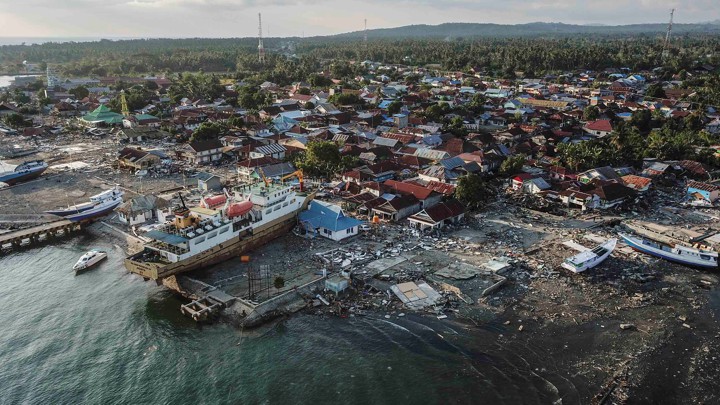On Friday, September 28, a Tsunami hit the shoreline of Palu, Indonesia. The wave was brought on by an earthquake with the epicenter located on the coast of Sulawesi island, 50 miles north of Palu, the town which faced the most damage.
Approximately half an hour after the earthquake, it was reported that waves reaching almost 18 feet hit land in the city, flattening buildings, destroying cars, and killing many. An estimated 384 people were killed but the death toll is expected to climb once the rescue teams gain access to coastal settlements.
Officials believed the 7.5 magnitude earthquake would possibly cause a tsunami, but they were not expecting one that large. That being said, according to The New York Times, the high casualty toll could point to a lack of advanced detection for natural disasters like earthquakes and tsunamis within Indonesia.
But the earthquake experienced prior to the Tsunami was not a megathrust, which occurs when large sections of the Earth’s crust are deformed and move vertically along the fault. Because of this, experts didn’t think that substantial amounts of water would be displaced and results in high speed waves traveling along ocean basins.
Instead, the Friday’s earthquake was a strike-slip fault in which movement within the Earth is mostly horizontal. This usually results in less displacement of seawater. But it sometimes can displace some water, and it is thought that Friday’s event may have originated in an area where the seafloor rises and drops, so the movement of the fault during an earthquake would ultimately cause some seawater to be pushed in front of it.
An alternative possibility could have been that the shaking during the earthquake may have caused an undersea landslide that displaced water, furthering the development of waves and increasing the impact that it had on Palu.
Friday’s events that led to the deaths of hundreds of people, illustrates that Indonesia needs to monitor the seafloor with better technology on a much more regular basis. Palu’s location is ideal for tsunamis to strike due to its location at the end of a narrow bay, but since the earthquake that generated the tsunami was so close to Palu, there was very little time to escape for those who reside on the coast.
Indonesia’s technology to detect such storms is very limited, in which they only use global positioning devices and seismographs. This method of detection lacks effectiveness, but has been used ever since they failed to maintain the sensors that were located on the ocean floor. Increased effort should be taken to fix this problem and prevent the future loss of lives if similar natural disasters were to occur again.



